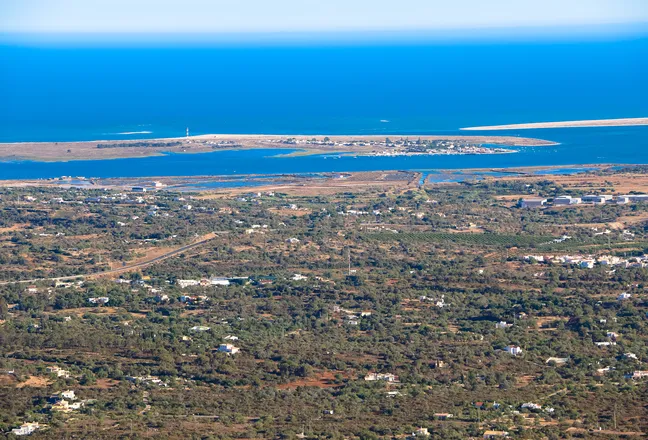Eastern Algarve
The Eastern Algarve is bordered by the Atlantic to the south, the N2 Faro-Sao Bras road to the west, the Vascao stream which forms the border with the Alentejo to the north, and the Guadiana river which forms the border between Portugal and Spain to the east. It is a small area, a parallelogram about 45km south to north and west to east. Anywhere can be visited in a day trip from Tavira in the centre of the coast.
The Eastern Algarve has four distinct geophysical zones:
The Guadiana river system marking its eastern flank and the border with Spain
The coastal strip of long sand beaches and the Ria Formosa wetlands, where Cochichos is situated.
The coastal plain of good agricultural land characterised by citrus orchards – the barrocal
The hills, sparsely populated, which account for most of the land area – the serra
Why go to the Eastern Algarve?
-
-
Quinta dos Cochichos is there.
Miles of golden sand beaches – the best in Portugal with the warmest water.
Still un-spoilt by mass tourism.
One of the sunniest places in Europe – over 3000 hours sunshine per year.
Kind, helpful people, no hassle.
Safe – no health or security risks
Plenty of sports
When to visit the Eastern Algarve?
The Algarve has one of the mildest and sunniest climates in Europe. That means it makes a welcome break from most of the European countries at any time of year: winter, spring, summer or autumn.
Winter
The Eastern Algarve doesn’t really have a winter, it just goes from a hot dry summer to an extended spring. However, temperatures are lowest and rainfall highest between November and February. But within these months, there are many days of blue skies when daytime temperatures in the sun reach mid to high 20′s centigrade and you can quiet easily sunbath. These warm ‘winter’ days are some of the nicest of the year. However, when the skies are clear, the evenings and the early mornings can be chilly, though it is very rare for temperatures to drop to zero overnight.
Advantages:
Cheapest time of the year (excluding Christmas and New Year weeks)
Less tourists
A welcome break from northern winter blues
Disadvantages:
If you are unlucky, it could rain for a whole week (though temperatures will be mild)
Less entertainment and festivals
Too cold to swim – unless you are brave
What to do:
Best time of year for doing the cultural things
Great for walking, bird watching, golf, Kite surf...
When the sun is shining, sit in it
Spring
Temperatures rise and rainfall lessens throughout March, April and May. This is the time that the plants go crazy before the summer heat – the wild flowers becoming ever more spectacular throughout these months. In the hills, the streams and rivers are flowing. You can have your first swims of the year in the sea, rivers or pool during these months.
Advantages:
Good value-for-money sunshine
Countryside at its most beautiful
Like summer but without the tourists
Disadvantages:
Could get a good soaking
What to do
Get into the hills
Enjoy the wild flowers
Do the cultural things (or play golf)
Summer
For four months, between the middle of May and the middle of September, it is very hot and completely dry. All ground cover has burnt away, leaving fields brown. However, many trees – especially alfarroba (carob) and olives – and other drought resistant plants are green all year round, so that even in the middle of summer there is a lot of greenery and some flowers. The citrus and other fruit orchards of the coastal plains are irrigated, ensuring green foliage and ripe fruit throughout the summer. For plants, the summer is like the winter in most of the European Countries – it is the time they die off, drop their leaves, and stop growing.
Advantages
Guaranteed sunshine
Warmest water
Many evening entertainment and festivals
Warm nights
Disadvantages
Can be very hot
Most expensive time of year
Transport, restaurants, beaches, shops – all at their busiest
What to do
Sit on the beach or by the pool
Swim
Stay in the shade
Drink plenty of water
Autumn
Sometime after the middle of September, the summer will ‘break’ and a thunderstorm will usher in the first rains. The extreme heat of summer will be gone and the climate enter one of the most pleasant times of the year. For plants, this is like the start of spring in most of the European countries, the time when they all begin to come to life again. The first rains – which can begin any time from late September to November – turn the hills and fields from brown to green almost over night.
Advantages
Warmest water of the year
Lovely walking weather
Best value-for-money sunshine of the year
Still summer but without the tourists
Disadvantages
Could get a soaking
What to do
Swim in the sea or the rivers
Play golf
Walk in the hills and on the beaches
Go bird watching in the Ria Formosa
